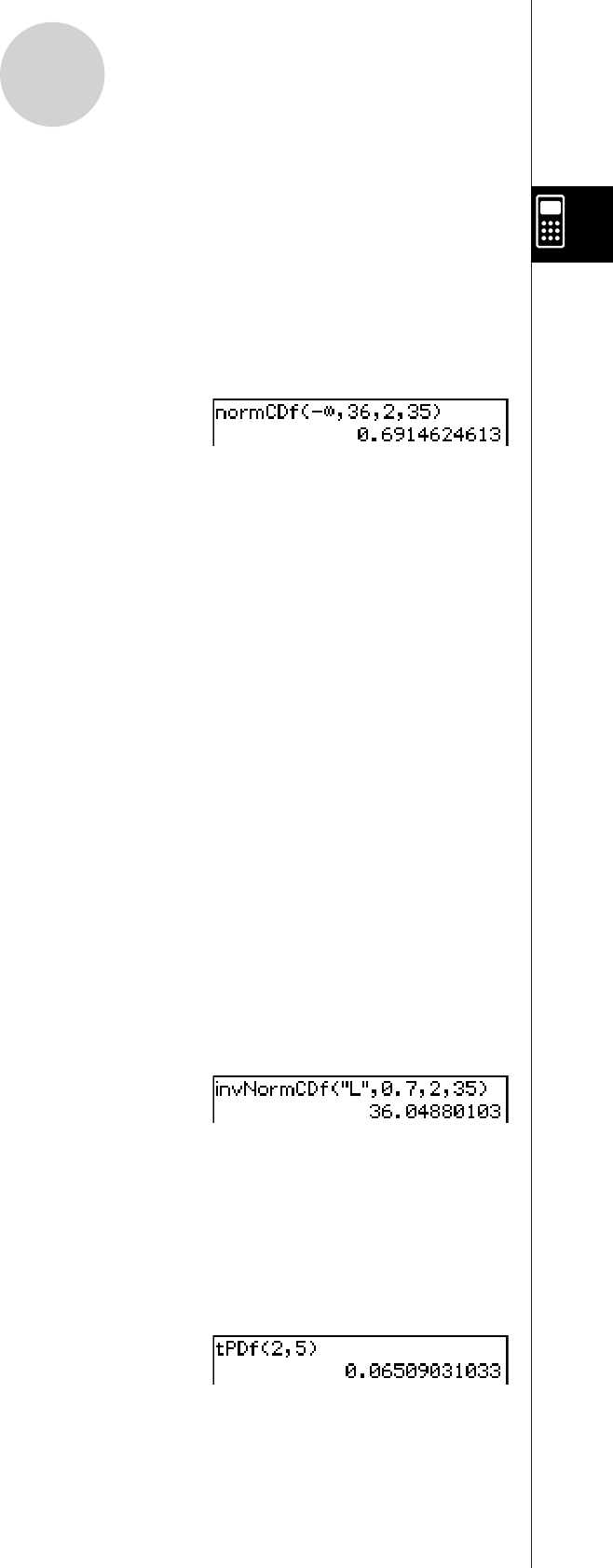
20090601
S normCDf
Function: Returns the cumulative probability of a normal distribution between a lower
bound and an upper bound.
Syntax: normCDf(lower value, upper value[,
S
,
M
)]
• When
S
and
M
are skipped,
S
= 1 and
M
= 0 are used.
Example: To determine the normal probability density when lower bound value = −d,
upper bound value = 36,
S
= 2,
M
= 35
Menu Item: [Action][Distribution][normCDf]
For more information, see “Normal Cumulative Distribution” on page 7-11-4.
S invNormCDf
Function: Returns the boundary value(s) of a normal cumulative distribution probability
for specified values.
Syntax: invNormCDf([tail setting, ]area value[,
S
,
M
)]
• When
S
and
M
are skipped,
S
= 1 and
M
= 0 are used.
• “tail setting” displays the probability value tail specification, and Left, Right, or Center
can be specified. Enter the following values or letters to specify:
Left: −1, “L”, or “l”
Center: 0, “C”, or “c”
Right: 1, “R”, or “r”
When input is skipped, “Left” is used.
• When one argument is omitted (resulting in three arguments), Tail=Left.
• When two arguments are omitted (resulting in two arguments), Tail=Left,
M
=0.
• When three arguments are omitted (resulting in one argument), Tail=Left,
S
=1,
M
=0.
• When “tail setting” is Center, the lower bound value is returned.
Example: To determine the upper bound value when tail setting = Left, area value = 0.7,
S
= 2,
M
= 35
Menu Item: [Action][Inv. Distribution][invNormCDf]
For more information, see “Inverse Normal Cumulative Distribution” on page 7-11-5.
S tPDf
Function: Returns the Student-t probability density for a specified value.
Syntax: tPDf(
x, df [ ) ]
Example: To determine the Student-
t probability density when x = 2, df = 5
Menu Item: [Action][Distribution][tPDf]
For more information, see “Student-
t Probability Density” on page 7-11-6.
2-8-50
Using the Action Menu


















